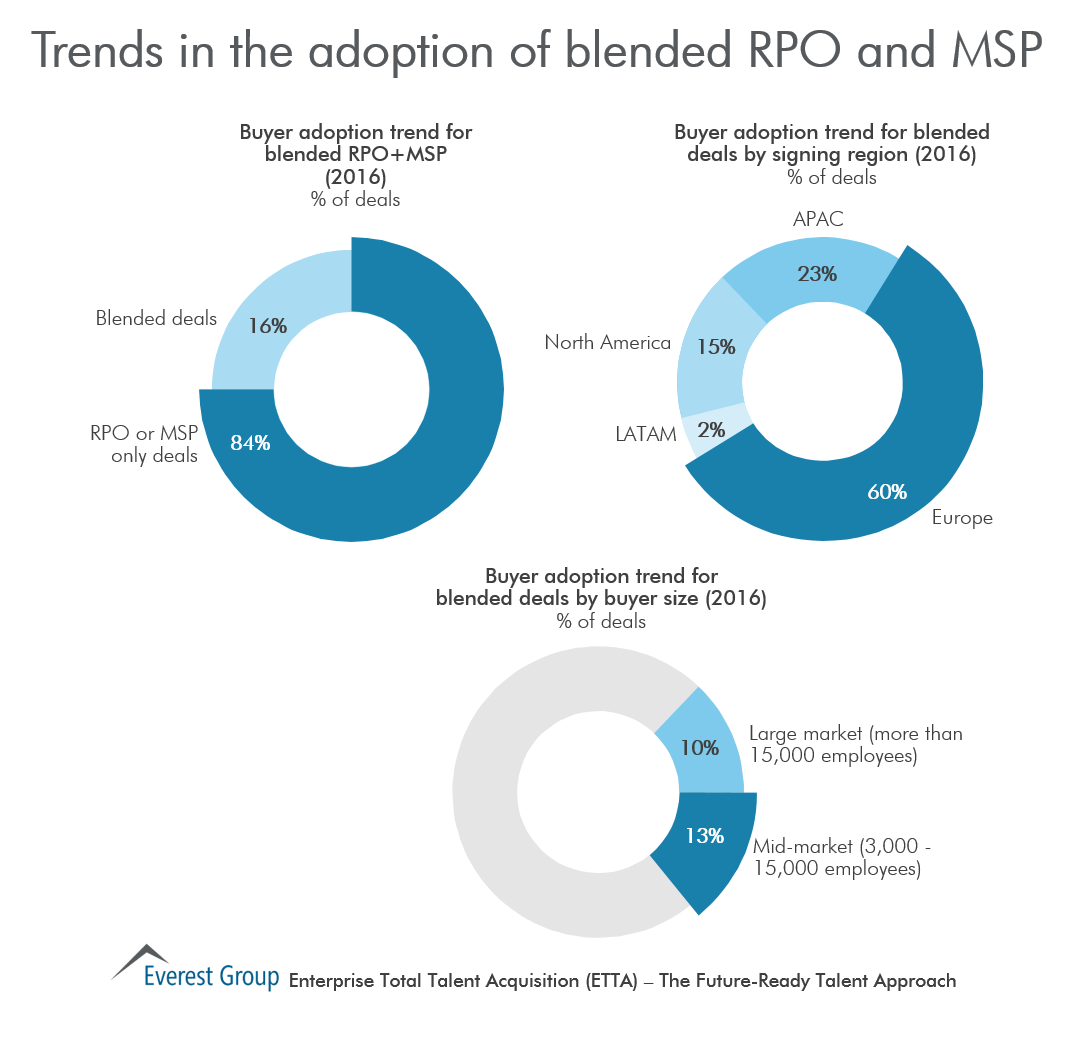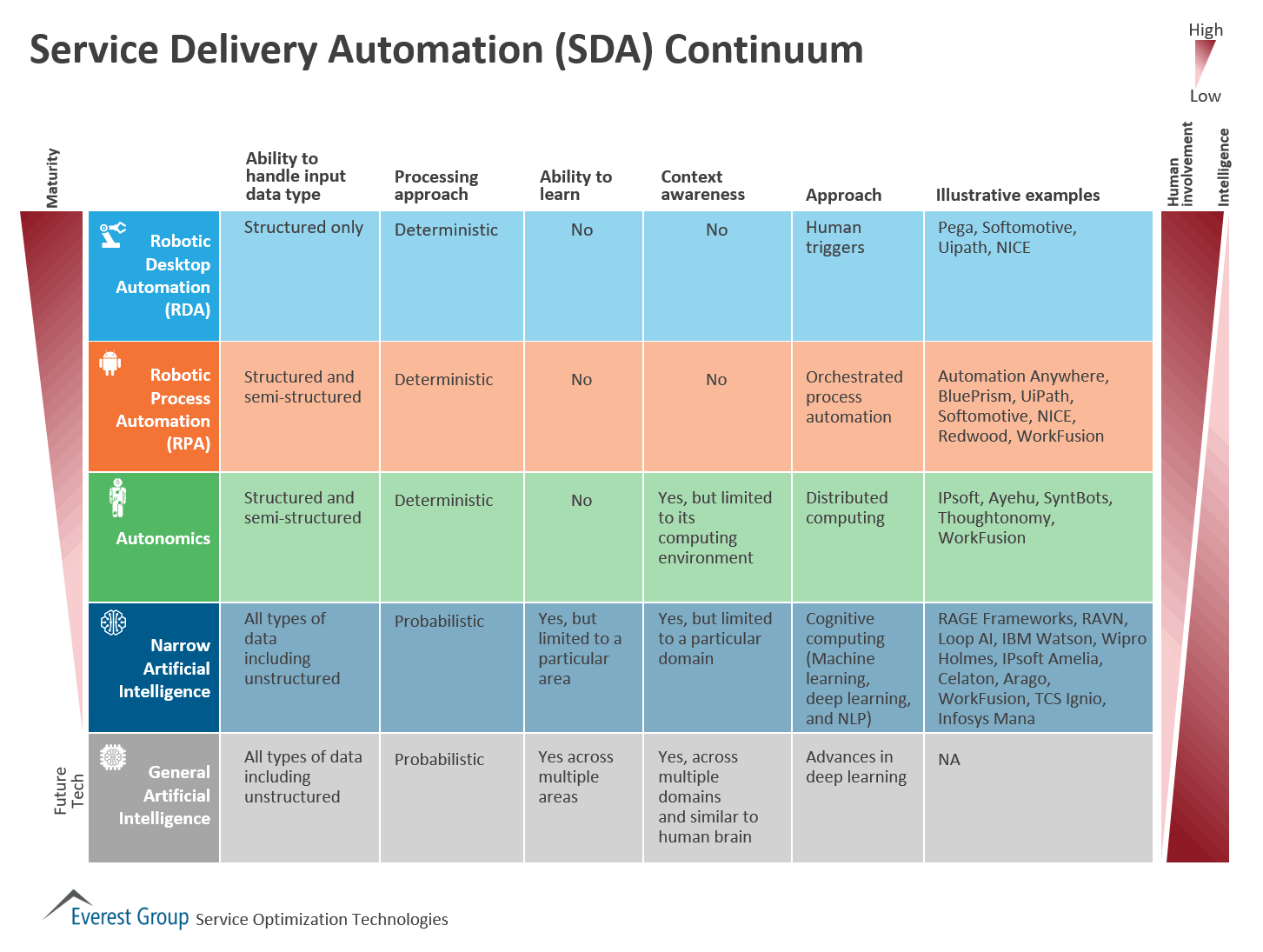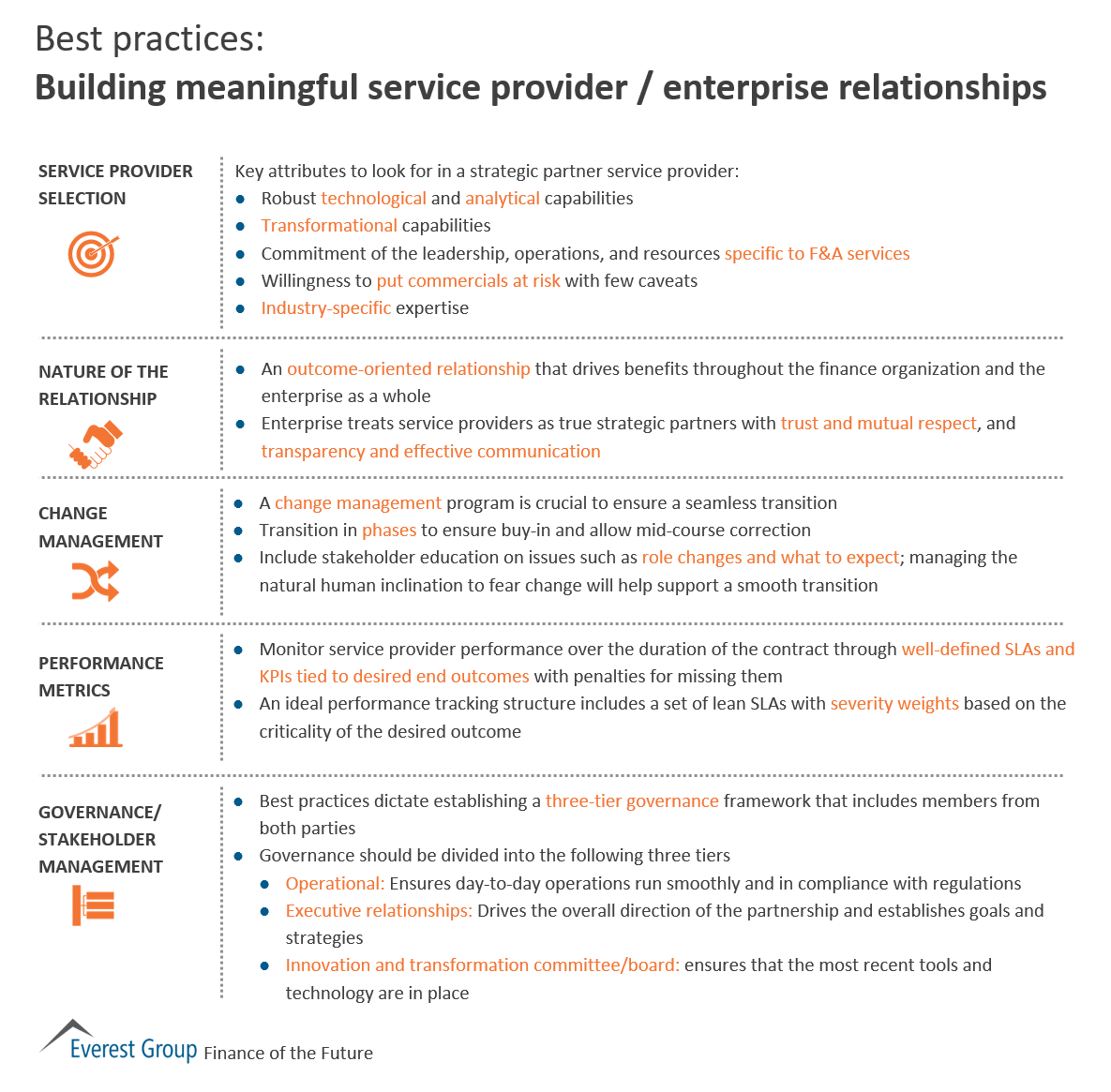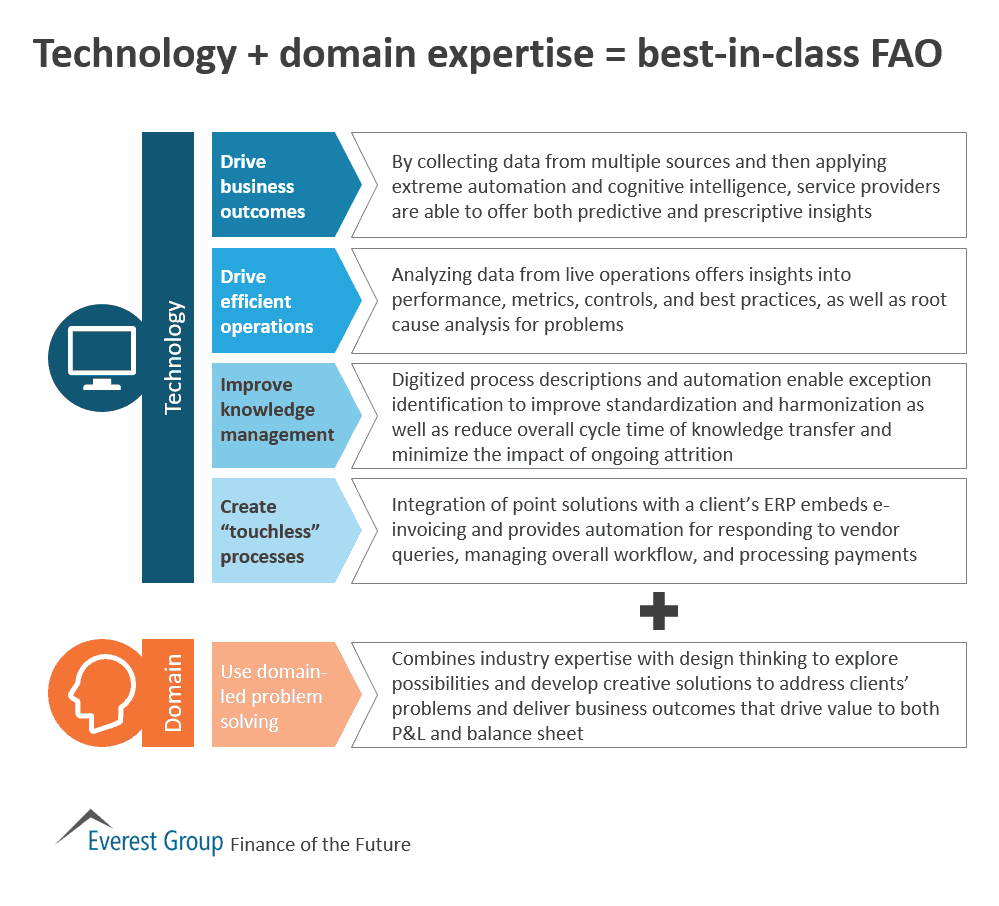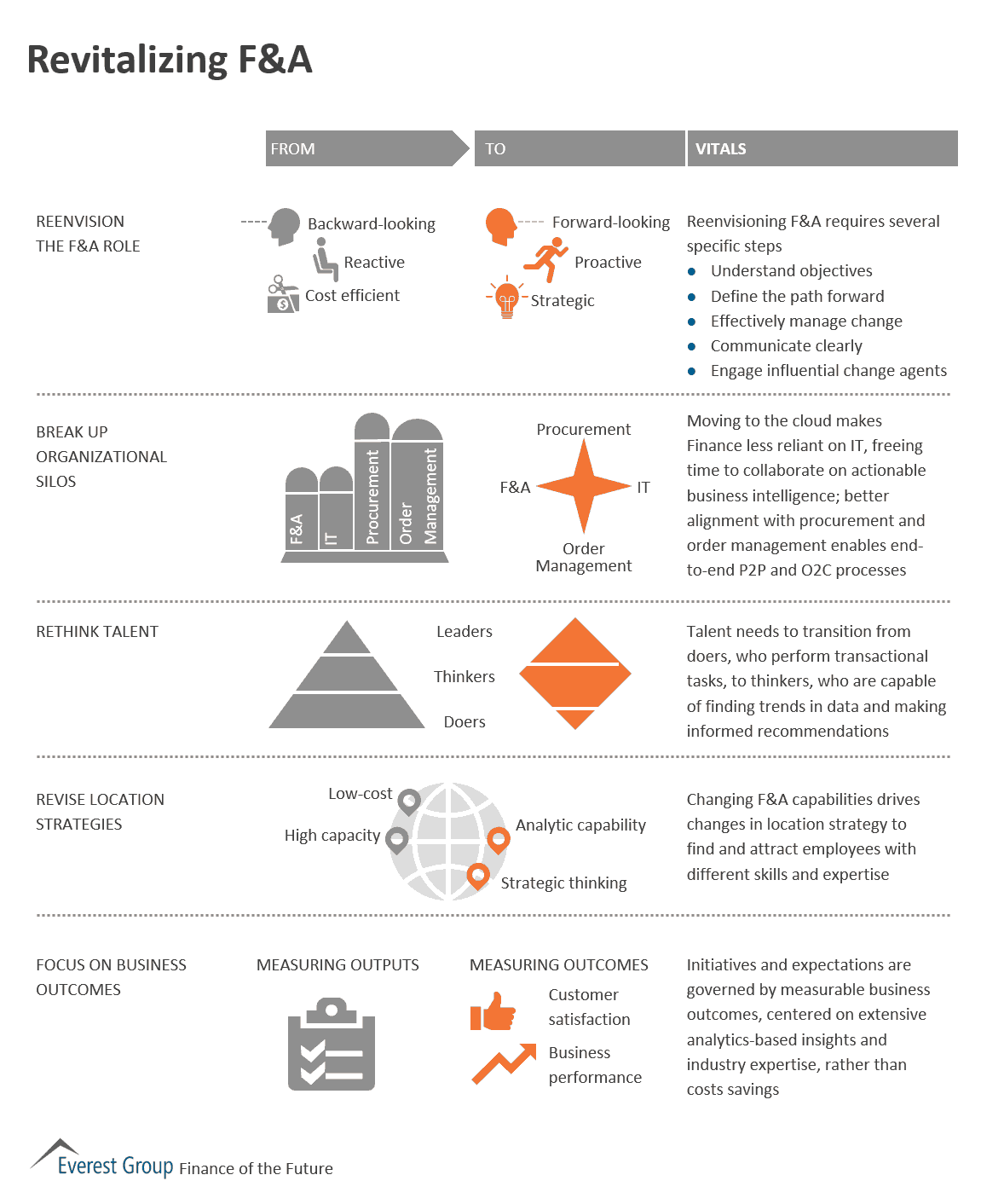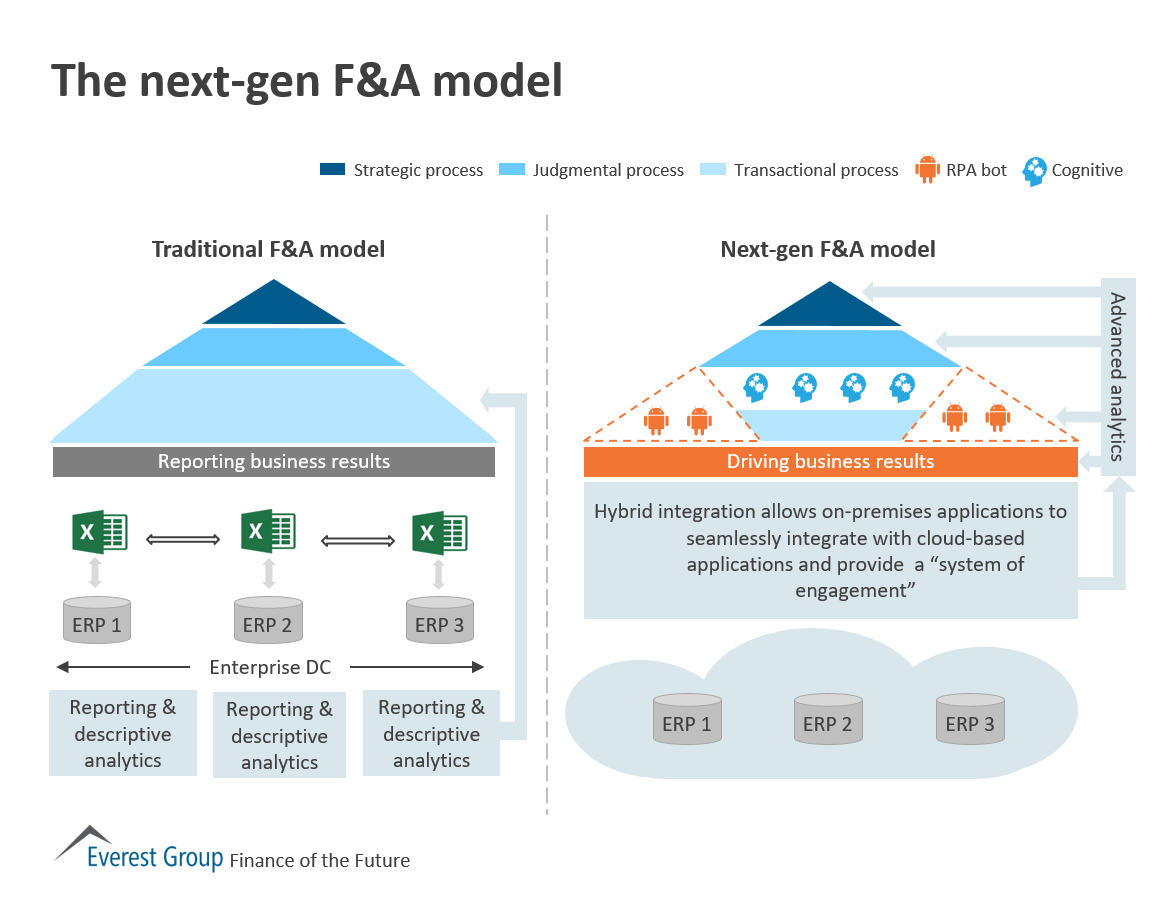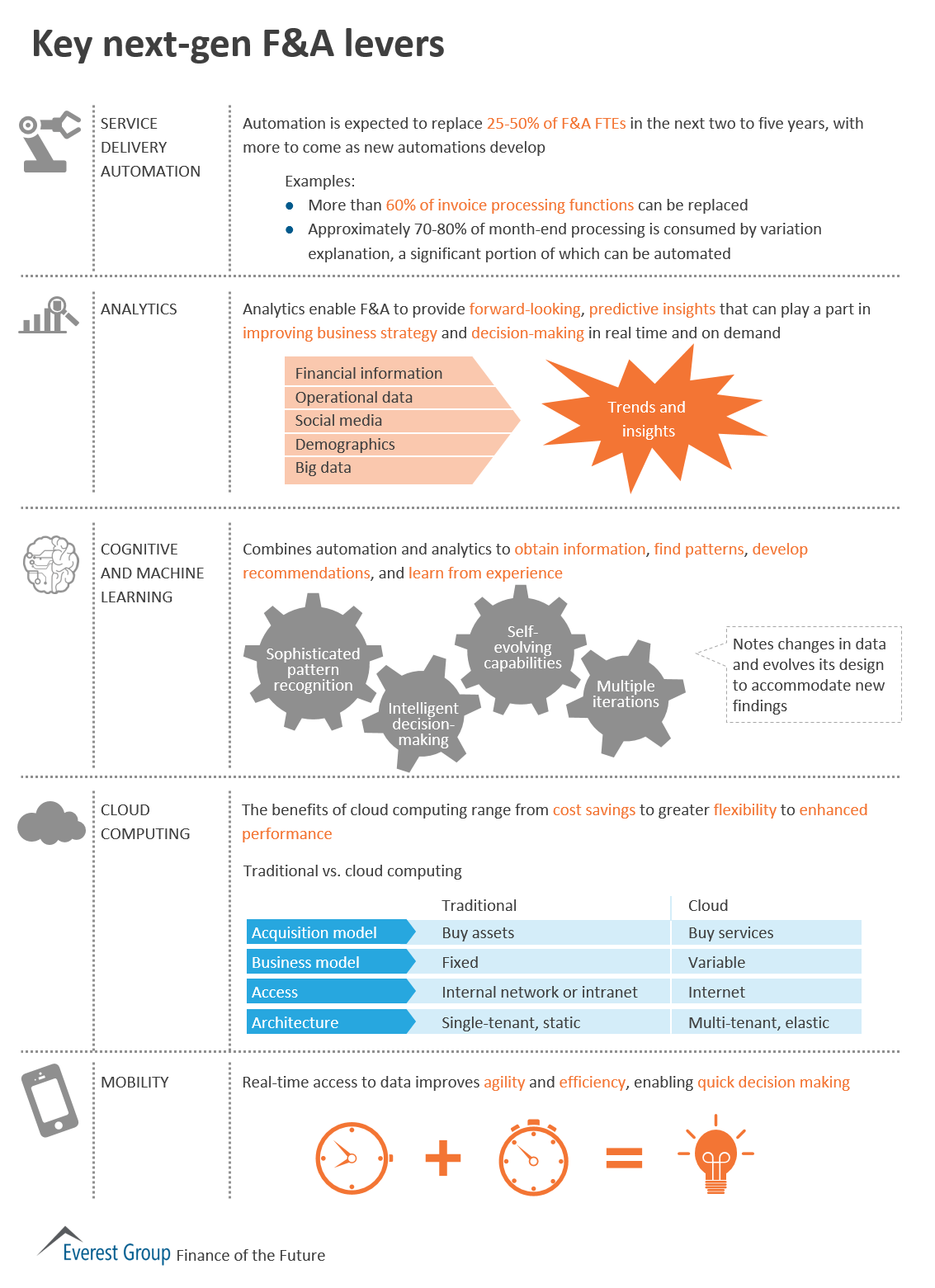May 10, 2017
Service providers in India have issued several announcements around their intentions to let a fairly sizeable number of employees go. Six thousand at Cognizant, 1,000 at Infosys, more than 200 in the Mumbai office of Capgemini (a French company), and several hundred last month at Wipro with expectations of another 10 percent of the workforce this year if revenues don’t improve. This is unusual in this market and, understandably, it is creating angst among employees in the companies as well as interest outside the companies. However, it’s not just a case of “downsizing” and thousands of layoffs, as many media have reported. Let’s look closer at what’s really happening.
Digital is the New Reality
We at Everest Group have been tracing the trends in the traditional arbitrage-first based model, which constituted 78 percent of the services marketplace. The arbitrage-first business shrank in the last 12 months. The rotation into new digital models is another factor. Where it’s applied, the digital business cannibalizes the arbitrage business and compresses that revenue by 30-40 percent. Also, digital revenues at this point are small. Digital models are primarily in the implementation phase; therefore, most projects are small in nature and most are located onshore at customers’ locations.
Because of the arbitrage decline and the change to digital models, service providers now have an excess number of employees for the first time since the global economic crisis and recession in 2008. As market realities have changed, India’s service providers are taking steps to adjust their business models. As digital models often require 30-40 percent fewer people to do the work, I think it would be surprising if they didn’t thin their labor pools as a necessary part of adjusting to the new realities and new business models!
Talent Models are Out of Whack
But as I mentioned earlier, the providers are not just laying off workers. They’re also hiring. Their talent models are out of whack to be able to address digital work, which requires different skills and often needs to be done onshore where clients are located rather than offshore. Several are creating new jobs in onshore locations near their customers; Infosys, for instance, announced it is creating 10,000 jobs for US workers. Even in a digital world, the Indian providers need to maintain their pyramids (which rely on steady new hires of junior people) so they can keep their costs low.
Bottom Line for Indian Service Providers
India’s service providers are making difficult choices, including thinning their arbitrage-based talent pools. Thus, the layoffs are understandable and, indeed, necessary. It indicates organizations and an industry in transition and undergoing unaccustomed pain.
The service providers’ clients should view these developments as encouraging because the providers are taking the necessary steps to put digital talent in place. But the providers’ employees understandably experience trepidation as they face the new market realities with an increasingly uncertain future.
